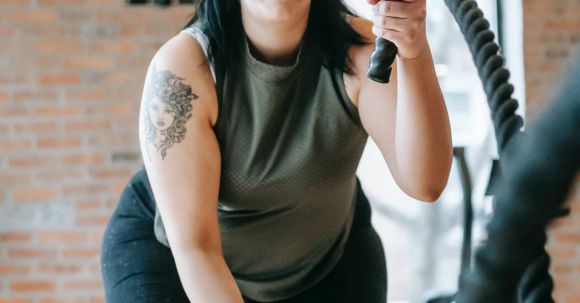In today’s fast-paced world, it is essential to have the physical strength and stamina to perform everyday activities with ease. Whether it’s carrying groceries, lifting heavy objects, or playing with your kids, functional fitness plays a crucial role in making these tasks effortless. Functional fitness focuses on building strength and improving movement patterns that are essential for daily life. By incorporating functional exercises into your workout routine, you can enhance your overall strength, improve mobility, and reduce the risk of injuries.
What is Functional Fitness?
Functional fitness refers to a type of exercise that mimics real-life movements and trains your body to perform tasks efficiently. Unlike traditional workouts that often isolate specific muscle groups, functional fitness exercises engage multiple muscle groups simultaneously. This approach helps improve the coordination, stability, and flexibility needed for everyday activities. Functional exercises typically involve movements that are similar to those performed in daily life, such as squats, lunges, pushing, pulling, and twisting.
Benefits of Functional Fitness
1. Improved Strength: Functional exercises engage multiple muscle groups, allowing you to develop overall strength rather than just focusing on isolated muscles. This translates into increased power and the ability to perform tasks that require strength more effectively.
2. Enhanced Mobility: Functional fitness exercises improve joint mobility and flexibility, making it easier to perform movements with a full range of motion. This can be especially beneficial as we age, helping us maintain independence and prevent mobility issues.
3. Injury Prevention: By training your body to move in a functional manner, you can reduce the risk of injuries during everyday activities. Functional fitness improves the stability and balance needed for tasks such as bending, lifting, and twisting, reducing the likelihood of strains or sprains.
Functional Fitness Exercises
1. Squats: Squats are a fundamental functional exercise that strengthens your lower body, including your quadriceps, hamstrings, and glutes. To perform a squat, stand with your feet shoulder-width apart, lower your body by bending your knees and hips, and then return to the starting position.
2. Lunges: Lunges target your quadriceps, hamstrings, glutes, and calves while also improving your balance and stability. Start by standing with your feet hip-width apart, take a step forward with one leg, and lower your body until both knees are bent at a 90-degree angle. Push through your front heel to return to the starting position and repeat with the other leg.
3. Push-ups: Push-ups are a fantastic functional exercise that targets your chest, shoulders, triceps, and core. Start in a plank position with your hands slightly wider than shoulder-width apart, lower your body by bending your elbows, and then push back up to the starting position.
4. Deadlifts: Deadlifts strengthen your posterior chain, including your glutes, hamstrings, and lower back. Stand with your feet hip-width apart, bend your knees and hinge at the hips to lower your torso while keeping your back straight. Lift the weight back up by pushing through your heels and extending your hips.
Conclusion: Embrace Functional Fitness
Functional fitness is not just about building a strong physique; it’s about preparing your body for the demands of everyday life. By incorporating functional exercises into your workout routine, you can improve your strength, mobility, and reduce the risk of injuries. So, embrace functional fitness and enjoy the benefits of feeling strong and capable in all your daily activities.
